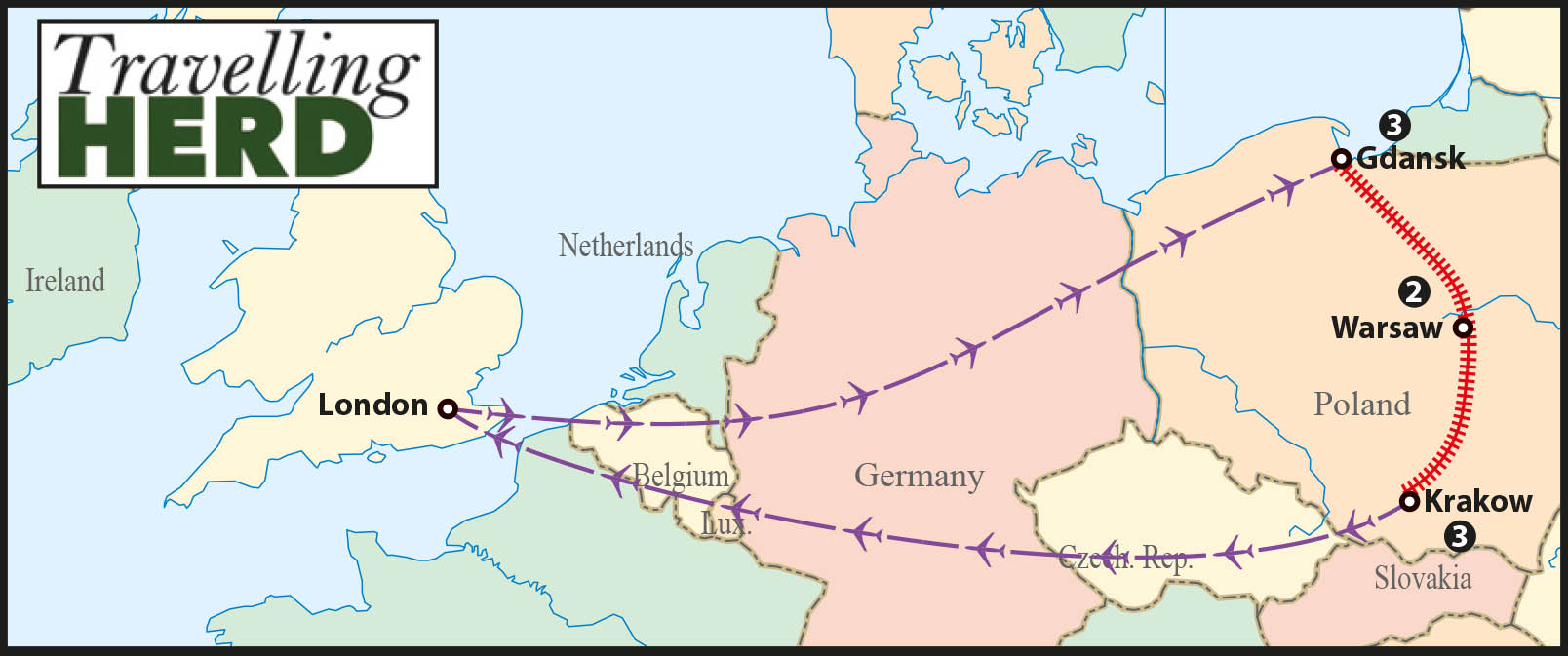Saturday 4th February 2023
Matilda was delighted to wake up and realise that she had been successful in the Wimbledon Ballot for the 2023 Championships and had been offered tickets to the Men’s Singles Final. There was a brief period when she thought this might have been a scam but logging in to her account she found that the ticket offer was genuine.
Her initial reaction of “Woah, that’s quite a lot of money,” was quite swiftly followed by “Wow this could be my one and only chance to do this”. One off the bucket list. Having confirmed with Robert that he would be her ‘plus one’ if no one else more interested in tennis, strawberries and Pimms could go with her she accepted and paid for her tickets.
Matilda then spent most of the train journey from Warsaw to Kraków smiling to herself and is now really looking forward to July.
We first came to Kraków together in 2016 before the inception of TravellingHerd.uk when we also visited Warsaw [see previous blog] and so we had already seen some of the major sights including the Royal Castle and Royal Cathedral.
Having settled in to our hotel we set off, as usual, to get our bearings. As Robert has visited this historic city several times on school trips and is therefore quite familiar with the major sights, some readers might think that this was just his excuse to go for a stroll in the direction of a favoured hostelry. Matilda insisted that the route should take in some of the Art Nouveau sites she had identified.
The route took us past the Barbican. In the thirteenth century, work was begun to enclose the Old Town and Wawel Hill within a defensive wall which eventually stretched over two miles and incorporated nearly 50 defensive tower outposts (of which just three remain today), and eight heavily guarded gates. The Barbican is one of these. Completed in the 15th century, it is almost 25 metres in diameter and is now said to be perhaps Europe’s best preserved example of a medieval outer-wall fortification post.
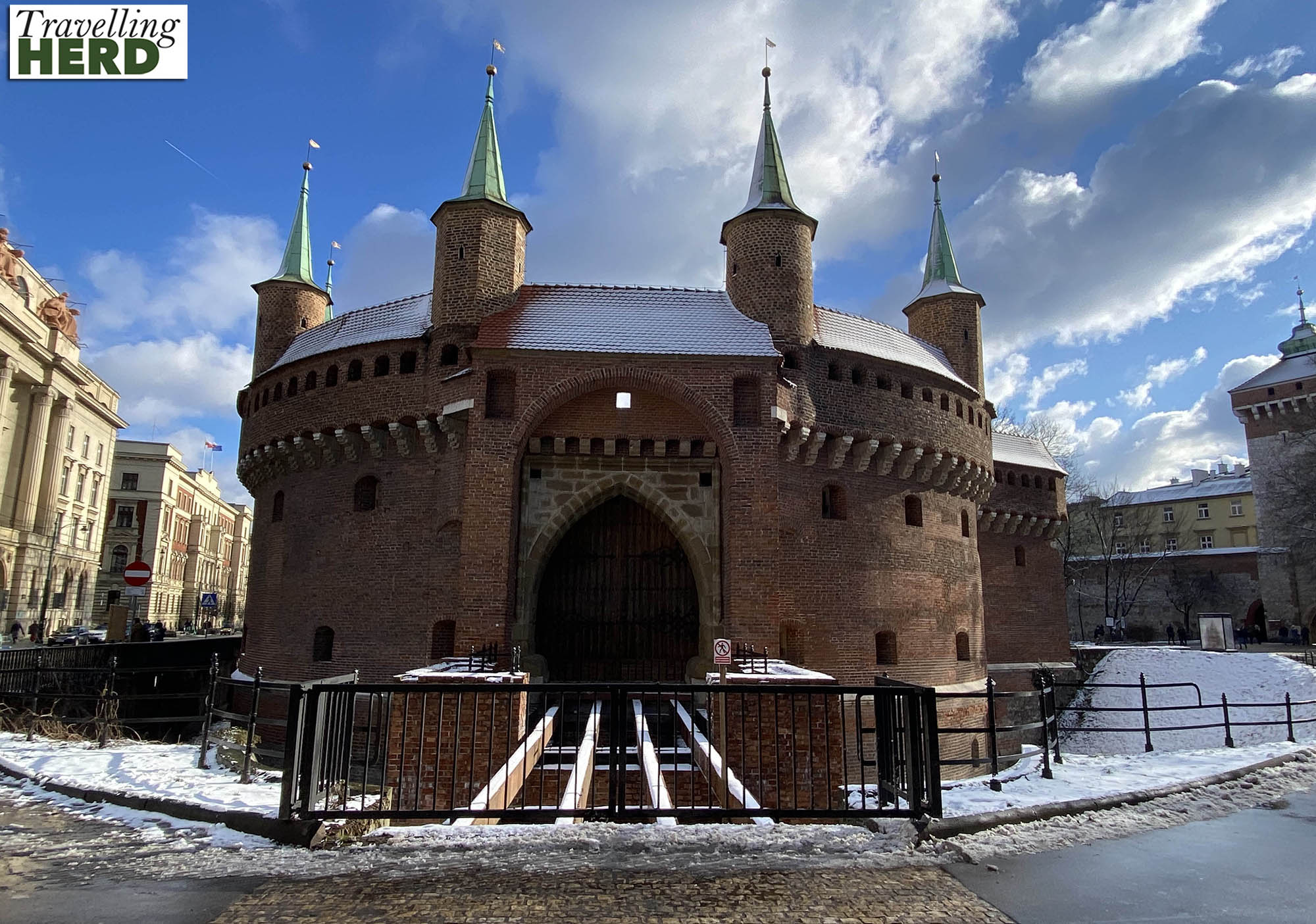
Rynek Glówny, the Main Square [also known as Main Market Square], covers 40,000 square meters and is home to Kościół Mariacki [Saint Mary’s Basilica], an imposing Gothic brick edifice with twin spires which are a symbol of Kraków itself.
There was a sign outside the Basilica which asked people not to enter, although as not everyone seemed to be obeying the sign, we went quickly inside to enjoy a brief glimpse of the gold and blue decoration.
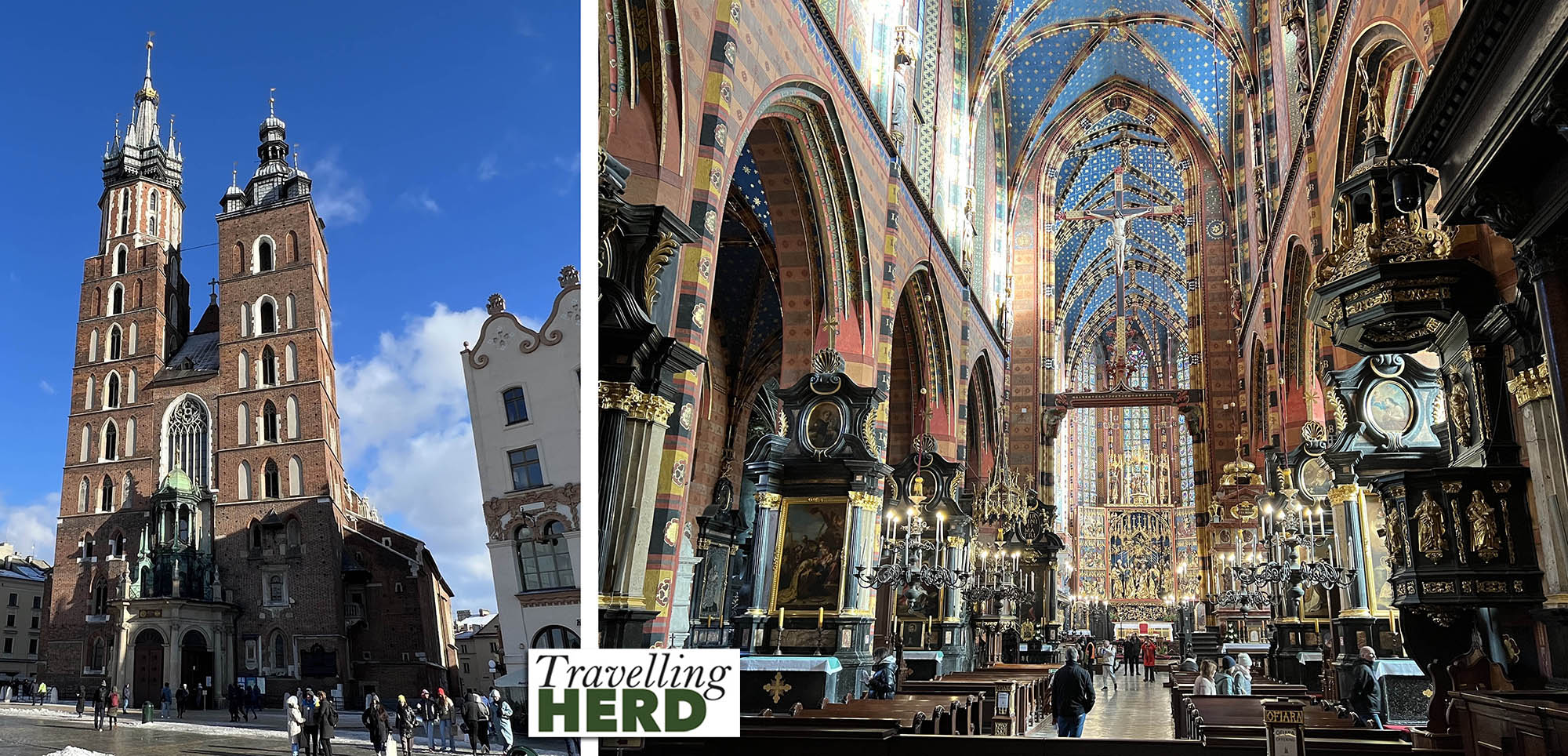
The Cloth Hall [or Sukiennice] lays claim to being the world’s oldest shopping mall and dominates the Main Square. On our last visit we went on a very interesting tour of the Rynek Underground Museum which we would definitely recommend. Situated in the vaults directly beneath the Main Square the museum includes displays on trade and transport as well as recently excavated archeological finds, dating back to the city’s beginnings.
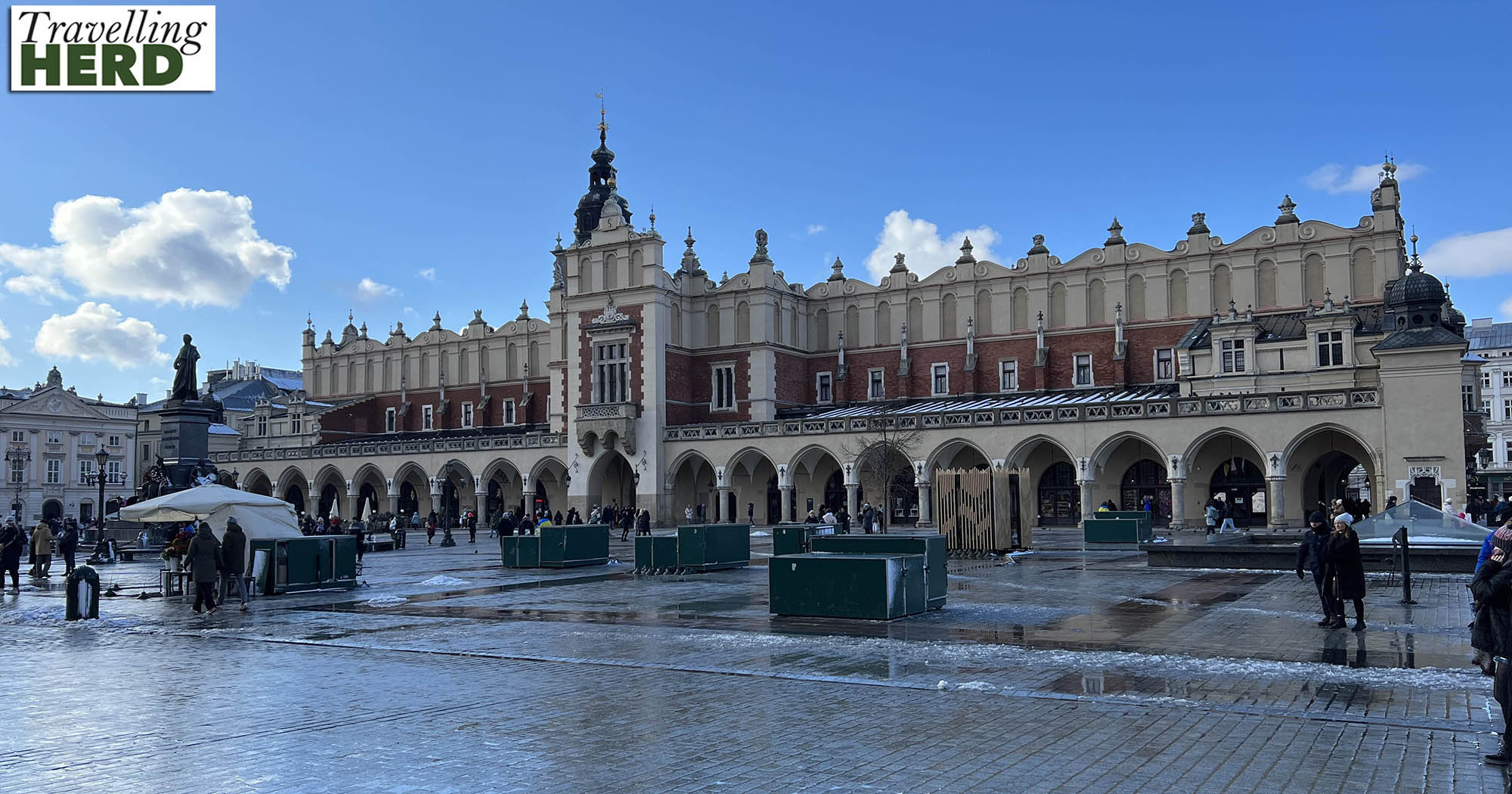
Matilda had read about the Art Nouveau decoration in the Franciscan Church which includes murals and stained glass windows by Stanislaw Wyspiański. The organic mural designs in the interior are very calming.
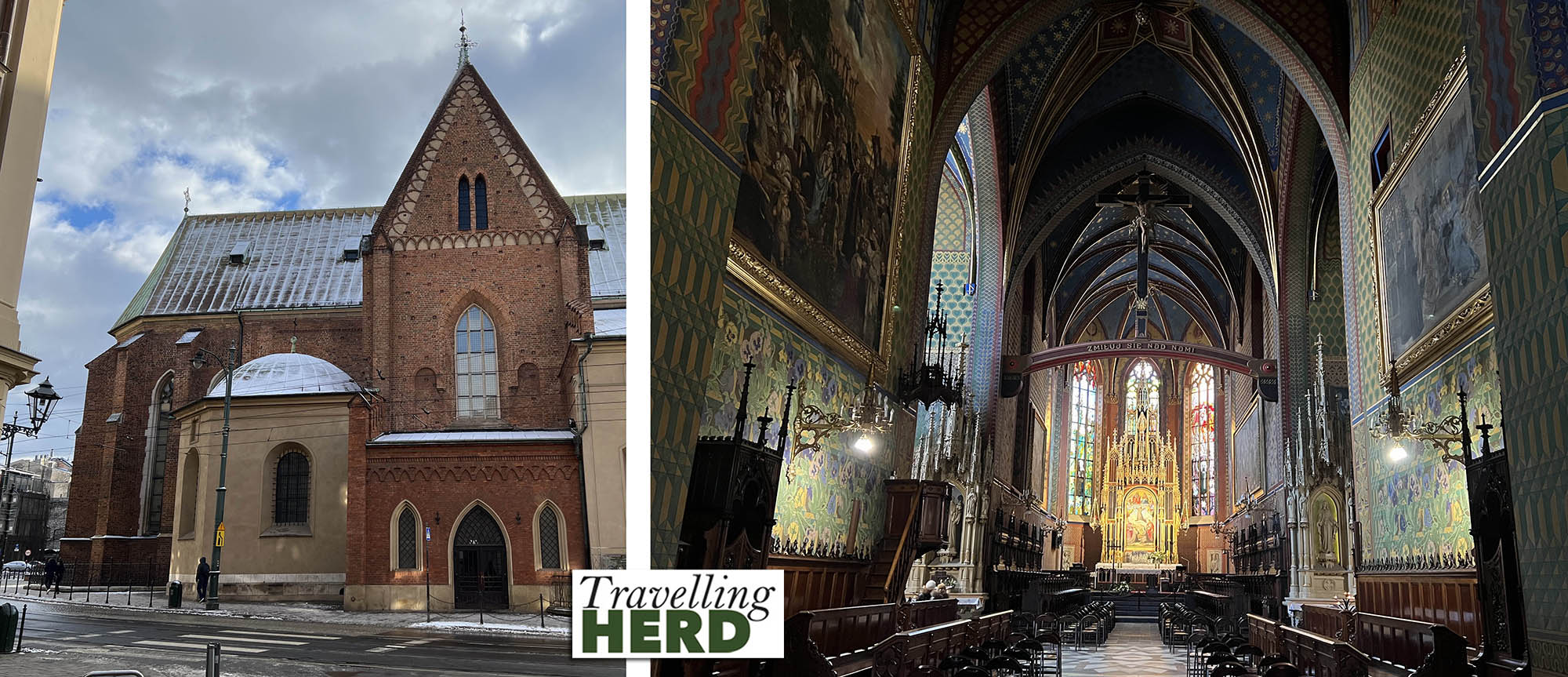
The Mehoffer House was originally the home of Józef Mehoffer, acclaimed Art Nouveau stained glass artist, and the artist Stanislaw Wyspiański mentioned above was born here. The building itself was not as decorative as Matilda had hoped but some of the art on display made up for this.

Legend has it that a cattle-eating dragon, which lived in a cave under Wawel Hill, was slain by King Krakus, or in some versions by a humble cobbler, Skuba. We thought that Skuba would not be the first person to have their achievements hijacked by someone of higher social status taking the credit. The Pomnik Smoka Wawelskiego, a brass statue of the dragon, now stands guard at the entrance to the cave at the foot of the Royal Castle and breathes fire every five minutes or so [see Video of the day].
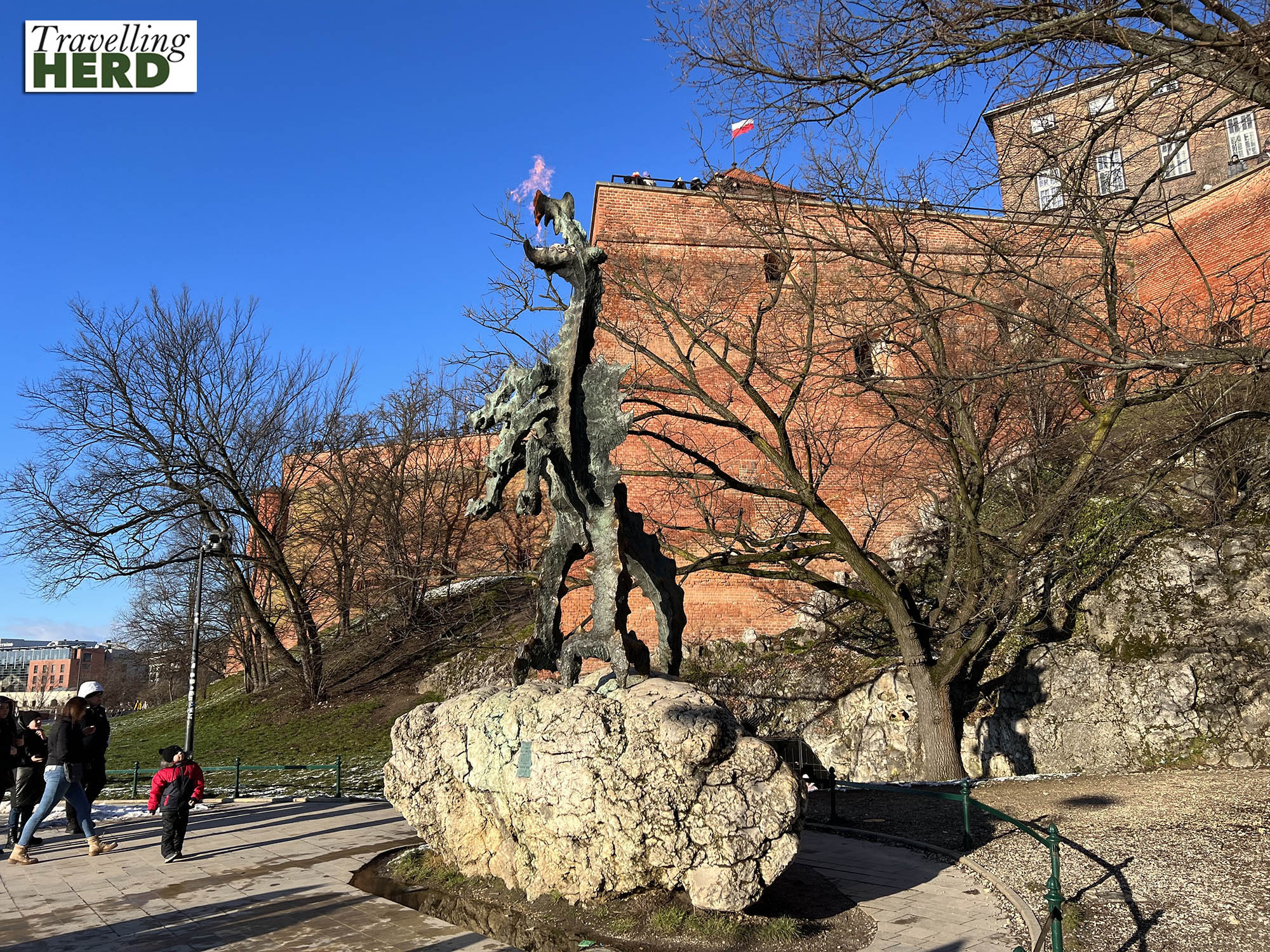
Another sculpture, the Eros Bendato by Igor Mitoraj lies in the western corner of the Main Market Square, near the Town Hall Tower. It depicts the head of Eros, the Greek god of love, lying on the ground, whilst the bandages which might once have covered his eyes have now fallen down over his face.
Hollow and sightless, the sculpture provides a contrast with the historic square and there is often a queue of people waiting to take photographs.
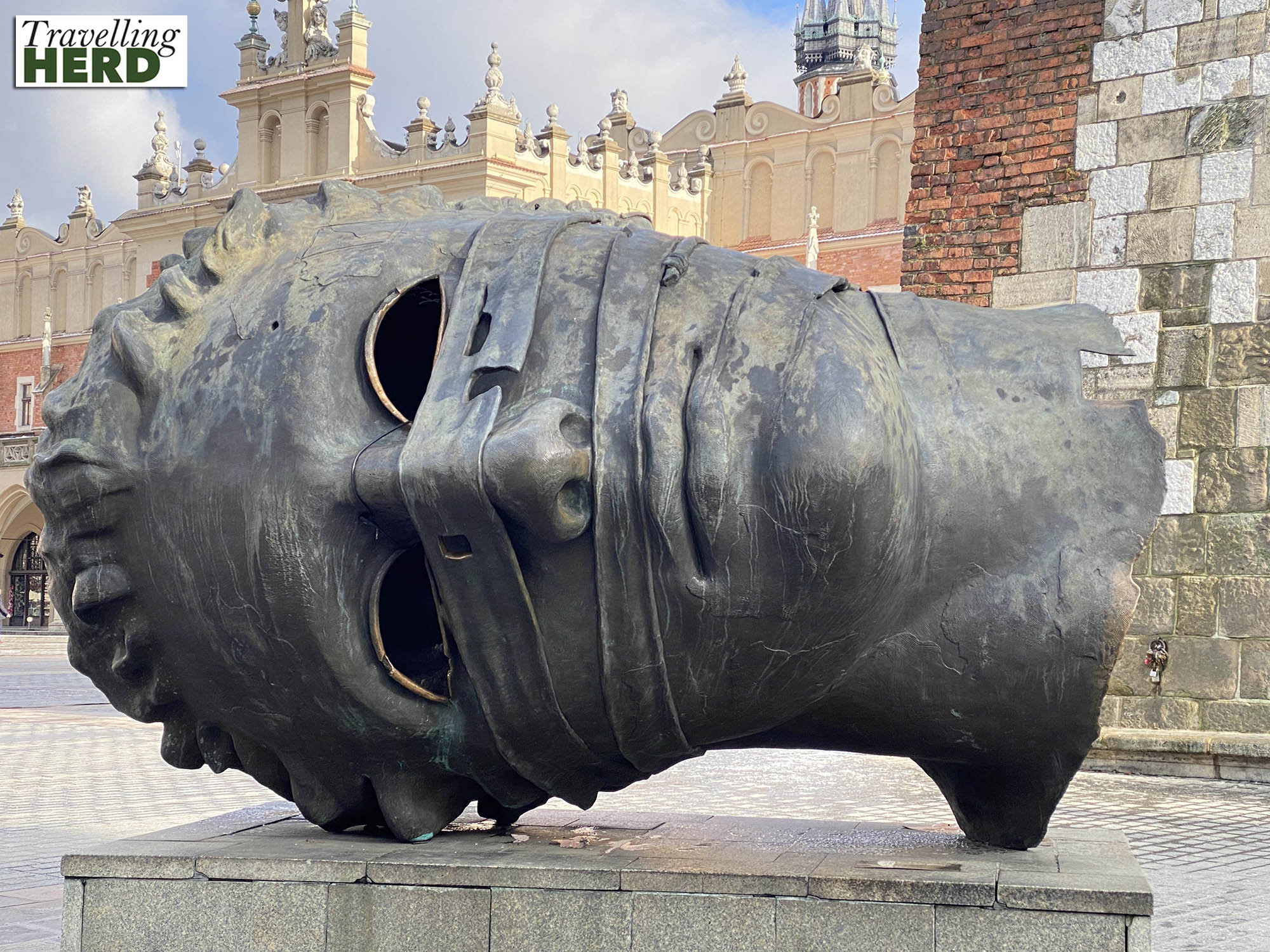
After dark, we returned back through the Main Square having eaten our fill. The portions in Poland are substantial.
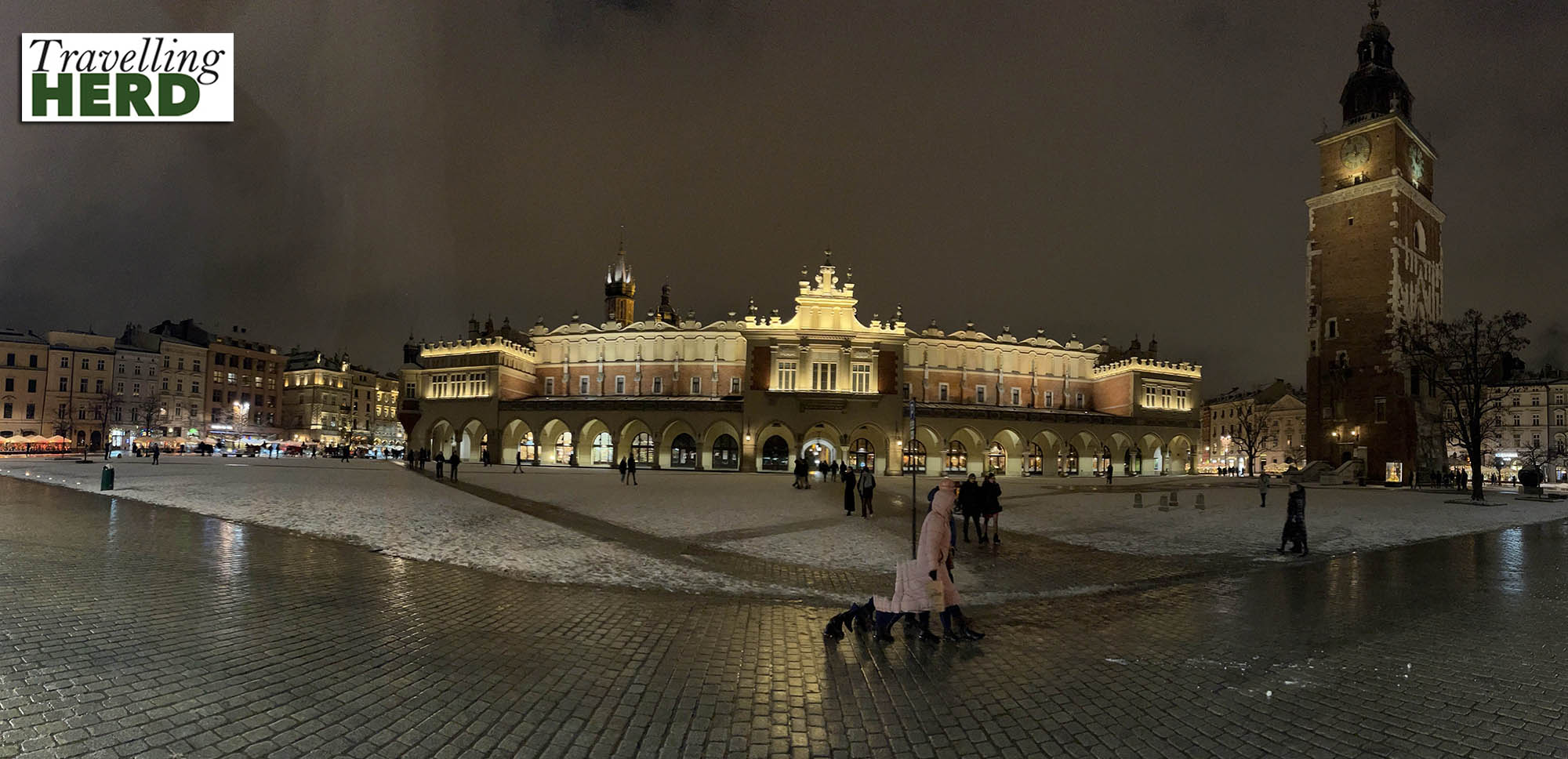
Here, the horse-drawn carriages were lined up waiting for business, despite the cold. In sub-zero temperatures we were happy to head back to the warmth of our hotel and continue our sight-seeing again the next day.
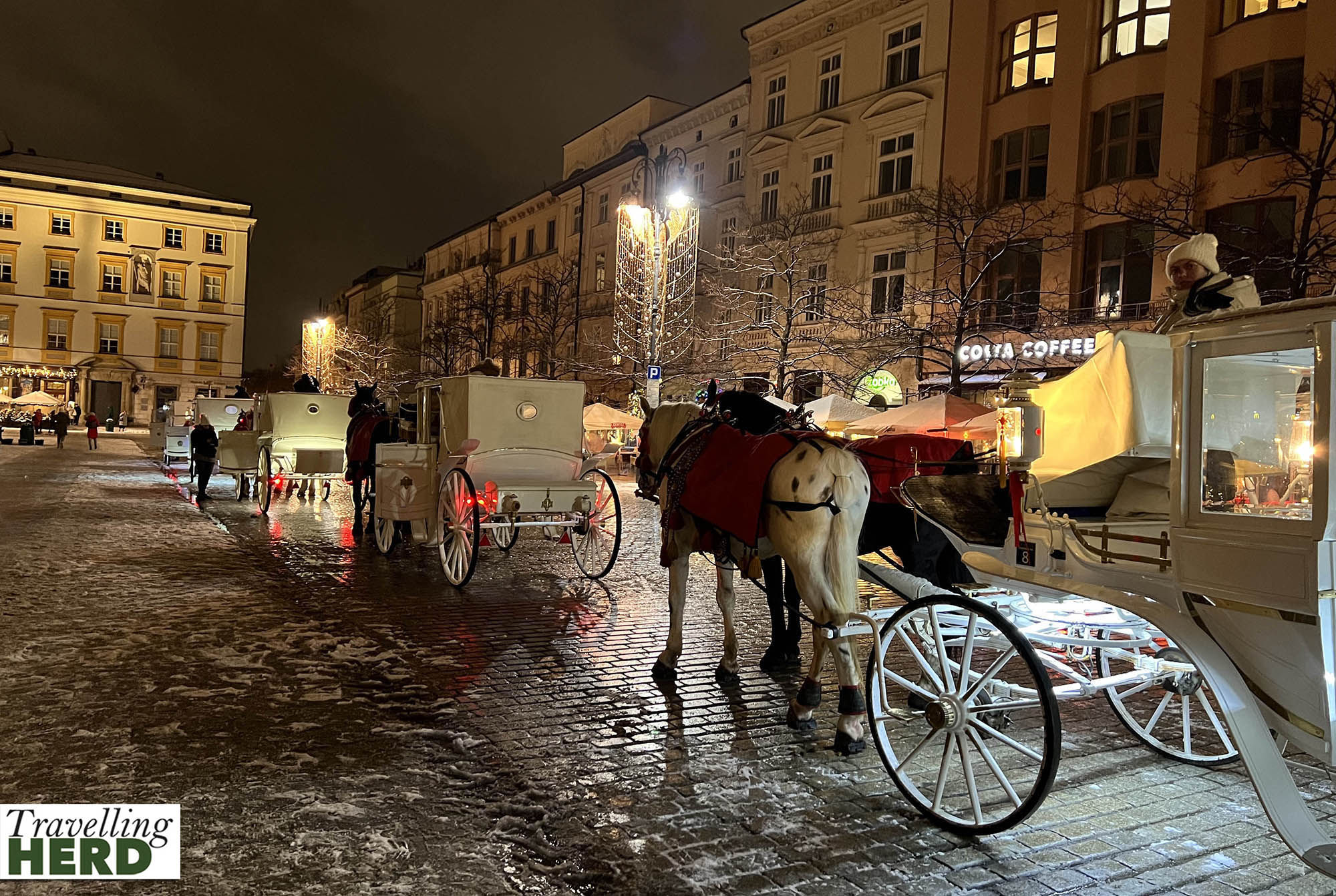
Video of the day:
Dish of the day:
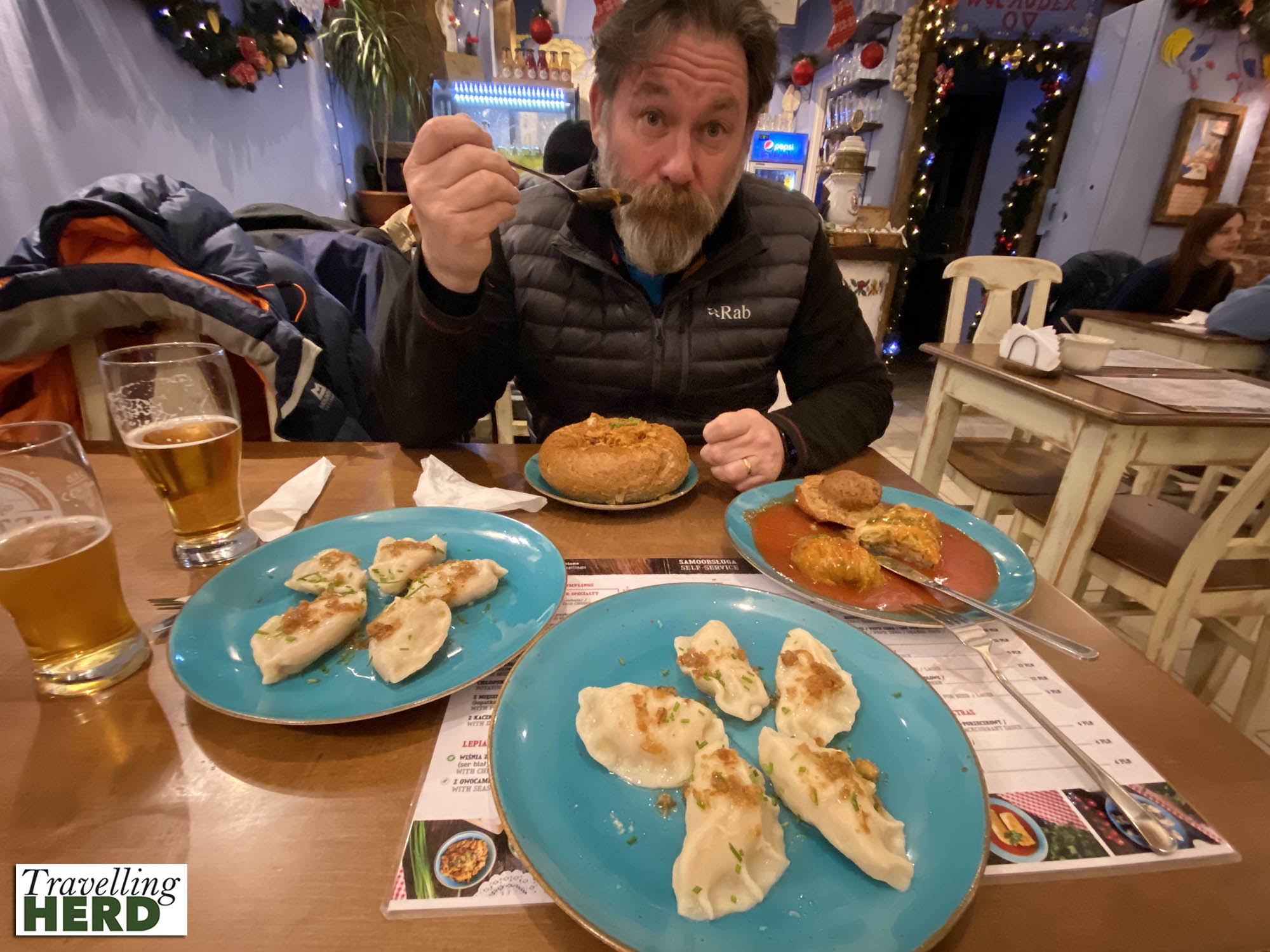
Route Map:
